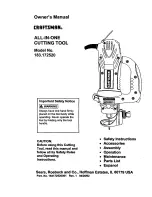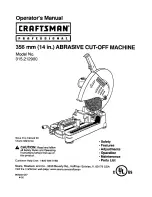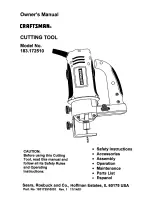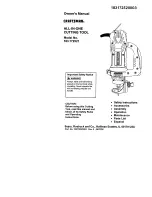
Preparing for use
ENGLISH
22
Loosen and turn assembly flange (j)
•
Put the protective cowl on a level surface with
the assembly flange (j) pointing up (screws (g) of
the assembly flange point up).
•
Turn out screw (k).
Hold the nut below the assembly flange with flat
pliers.
•
Twist the assembly flange against the protective
cowl so that the receptacle bore for the screw (k)
is located between the centre stop and the right
stop (m) on the protective cowl. The assembly
flange is hard to twist. Securely hold the
protective cowl when twisting.
Limit protective cowl rotating angle with screw (k)
•
Turn in screw (k) again.
For this, guide the nut (n) below the assembly
flange with flat pliers and hold it when turning in
the screw.
Turning of the protective cowl is limited by the
stops on the protective cowl between which the
nut can be moved.
Install cutting device in the outer position
•
Put the cutting device on the cutting device
carrier in the outer position. For this, guide both
screws (g) of the assembly flange through the
oblong holes and put the ribbed belt support (i)
into the ribbed belt.
•
Check that the ribbed belt is running freely.
Correct placement of the ribbed belt if required.
•
Put on the ribbed belt cover (14) again.
Adjust the ribbed belt tension
•
Screw both attachment nuts (d) of the ribbed belt
cover onto the assembly flange screws. Only
tighten the nuts manually so that the ribbed belt
tension can still be set.
•
Turn ribbed belt tension screw (13) towards the
right, e.g. clockwise, to increase the ribbed belt
tension). The correct tension is reached when
the square nut (e) is on the centre mark, i.e.
between "+" and "−".
•
Tighten both attachment nuts (d) firmly.
j
k
m
2
g
k
n
d
13
e
d
i
g
14
















































